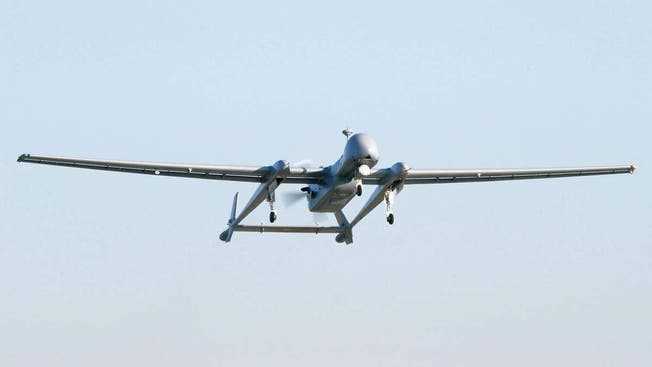Germany has committed itself to outlawing autonomous weapon systems. However, strengthening the Bundeswehr and the European security system using new technologies is the order of the day.
Unlike the Heron 1 recon drone, the Heron TP can be armed.
The Budget Committee of the German Bundestag has approved the arming of Heron-TP drones and released budget funds for this. This means that nothing stands in the way of equipping the Bundeswehr with armed drones, a project that has long been controversial.
However, the coalition agreement also stipulates that autonomous weapon systems should be outlawed. However, this is not a conflict of objectives. On the contrary, Germany can choose to arm its drones while rejecting systems that are beyond human control. However, a look at the war in Ukraine shows that there is a fine line between unmanned weapon systems and those that actually operate autonomously. The decision to arm drones is therefore by no means the end. The debate will continue and Germany must be open to new technological developments.
Drones equipped with missiles
With the procurement of 140 missiles for drones as well as additional equipment and weapons training for 152 million euros, the federal government is giving the go-ahead for the increased integration of new technologies in the air force. Britain and the United States are preparing to ship loitering munitions, commonly referred to as kamikaze drones, to Ukraine. These are remote-controlled precision munitions that can circle in the air for a long time after launch, before they identify a military object using their radar signature, and then fall on the target and detonate there. Civilians in the vicinity can become victims of military attacks.
Parties to the conflict must therefore take appropriate measures to avoid suffering and damage to the civilian population. According to official manufacturer information, the switchblade (kamikaze) drones supplied by the USA are used in such a way that the human operator can remotely monitor the target identification and the attack on a display and intervene if necessary. So far, “loitering ammunition” has been used sporadically on the Russian side, for example the Kub-Bla produced by Kalashnikov. On the Ukrainian side, on the other hand, only drones have been used so far, and the decision to attack is reserved for humans.
Since “loitering ammunition” is basically capable of selecting the target and carrying out the attack itself, it is often referred to as an autonomous weapon system. An argument against this is that remote-controlled precision ammunition cannot continue to develop itself and expand the circle of potential military targets. Loitering ammunition is a weapon whose area of application, time and the corresponding targets are subject to narrow human targets from the outset.
Human surveillance is essential
According to a 2020 report by a United Nations committee of experts on Libya, Turkey has allegedly used Kargu-2 “loitering munitions” against human targets as well. This allegation has not been fully proven. For use against human targets requires more than a corresponding radar signature. Whether Turkey actually deployed Kargu-2 in autonomous mode remains a matter of debate.
In any case, when used against enemy combatants, there must be sufficient human surveillance in order to avoid wrong decisions such as confusion with civilians.
The developments discussed here show that the German debate on arming drones is only just beginning. Politically sensitive terms such as “remote-controlled precision munitions” can cause Germany to turn a blind eye to the need to integrate new technologies into the armed forces and lose valuable time.
Remote-controlled precision ammunition can also be used in such a way that sufficient human control can be exercised. The responsible use of weapon systems with sensible man-machine interaction is therefore in no way inconsistent with the plan to become a reliable military partner.
The fact is that a discussion about the acquisition of “loitering ammunition” or other new technologies cannot take another ten years – by then the use of armed unmanned systems and (partially) autonomous weapons will be ubiquitous.
Germany is committed to outlawing autonomous weapon systems, and that’s a good thing. But it must not lag behind again in the ongoing debate about the integration of new technologies if the turning point is also to strengthen the German armed forces and the European security order in the long term.
Elisabeth Hoffberger-Pippan is among other things Project manager of the «International Panel on the Regulation of Autonomous Weapons» (iPRAW) at the Stiftung Wissenschaft und Politik (SWP) Berlin. Vanessa Vohs is a research assistant at SWP.
